Israeli Regime’s Army Dispatches 100 Aircraft To Attack Iran
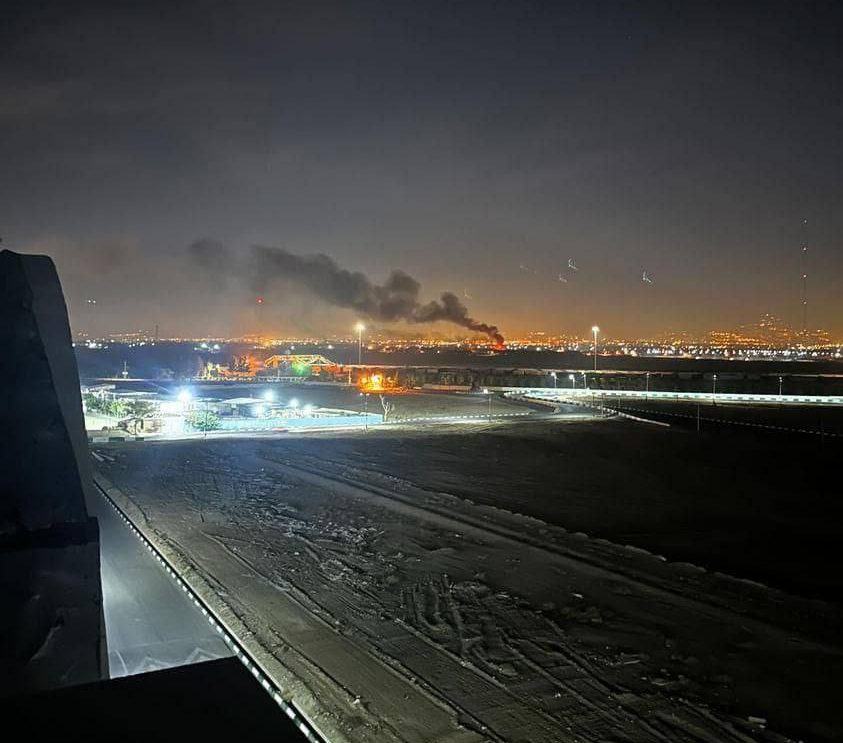
The Israeli regime’s army applied a squadron of 100 fighter jets and other military aircraft, as well as quadcopters in order to conduct an air raid on various targets in Tehran, Khuzestan, and Ilam provinces of Iran.
The Israeli army targeted the aforementioned areas in a hybrid attack early Saturday (October 26). Iran’s armed forces’ defense systems responded to these air strikes, and multiple reports of gunfire and explosions were heard around Tehran. Additionally, there were unverified reports of several explosions in the cities of Shiraz and Isfahan.
Spokesperson for the Israeli army Rear Admiral Daniel Hagari referred to this military operation as “Days of Repentance,” claiming that the Israeli army attacked military targets inside Iran in response to multiple strikes from the Islamic country in recent months, and that the Israeli attacks were in line with directives issued by political officials in Tel Aviv.
According to Israeli media reports, the regime’s army attacked 20 military targets related to air defense and ballistic missiles during this operation, using 100 fighter jets, including advanced F-35 jets. Channel 12 of Israeli TV claimed that these 20 military targets included arms and missile factories, drone launch facilities, and ballistic missile launch platforms. The Israeli newspaper Yedioth Ahronoth also quoted an Israeli official emphasizing that the air raid on Iran did not include nuclear or oil facilities.
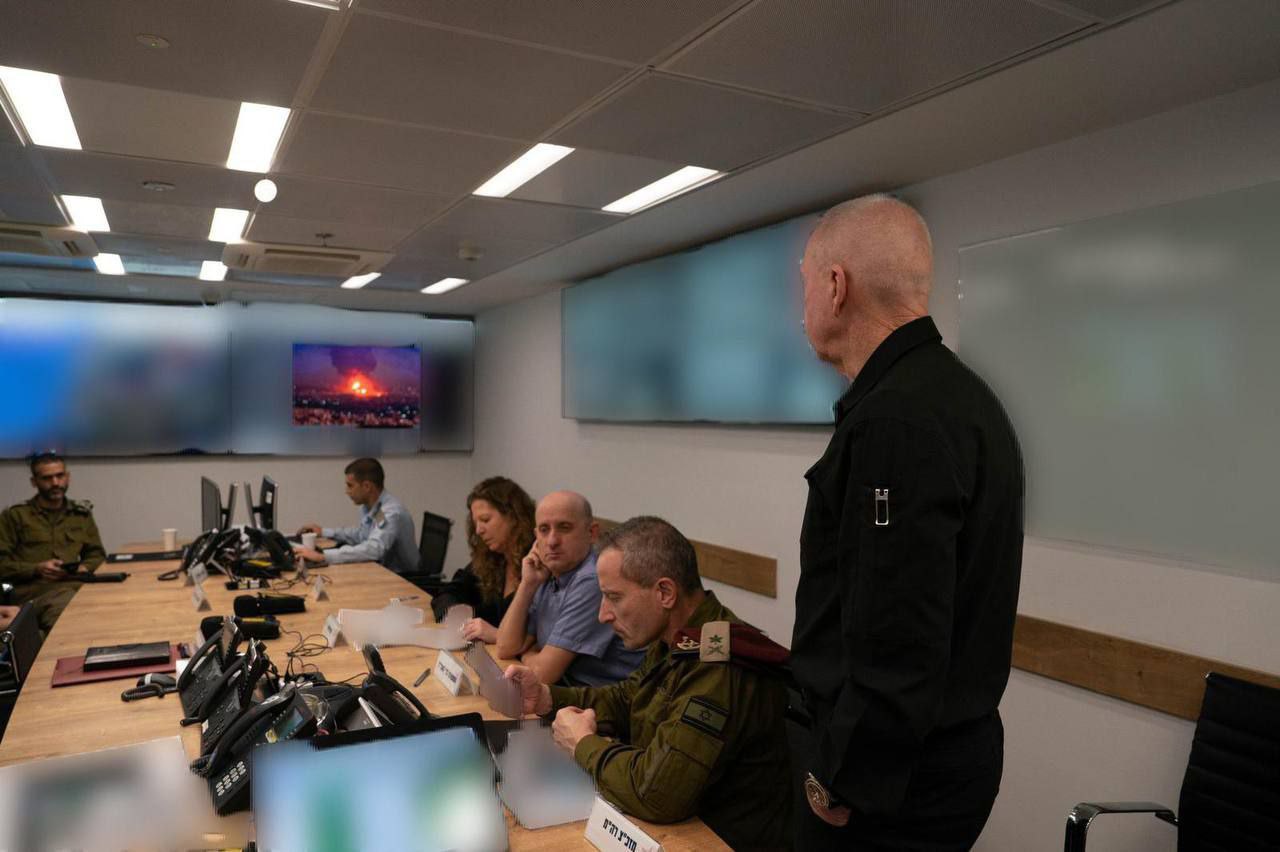
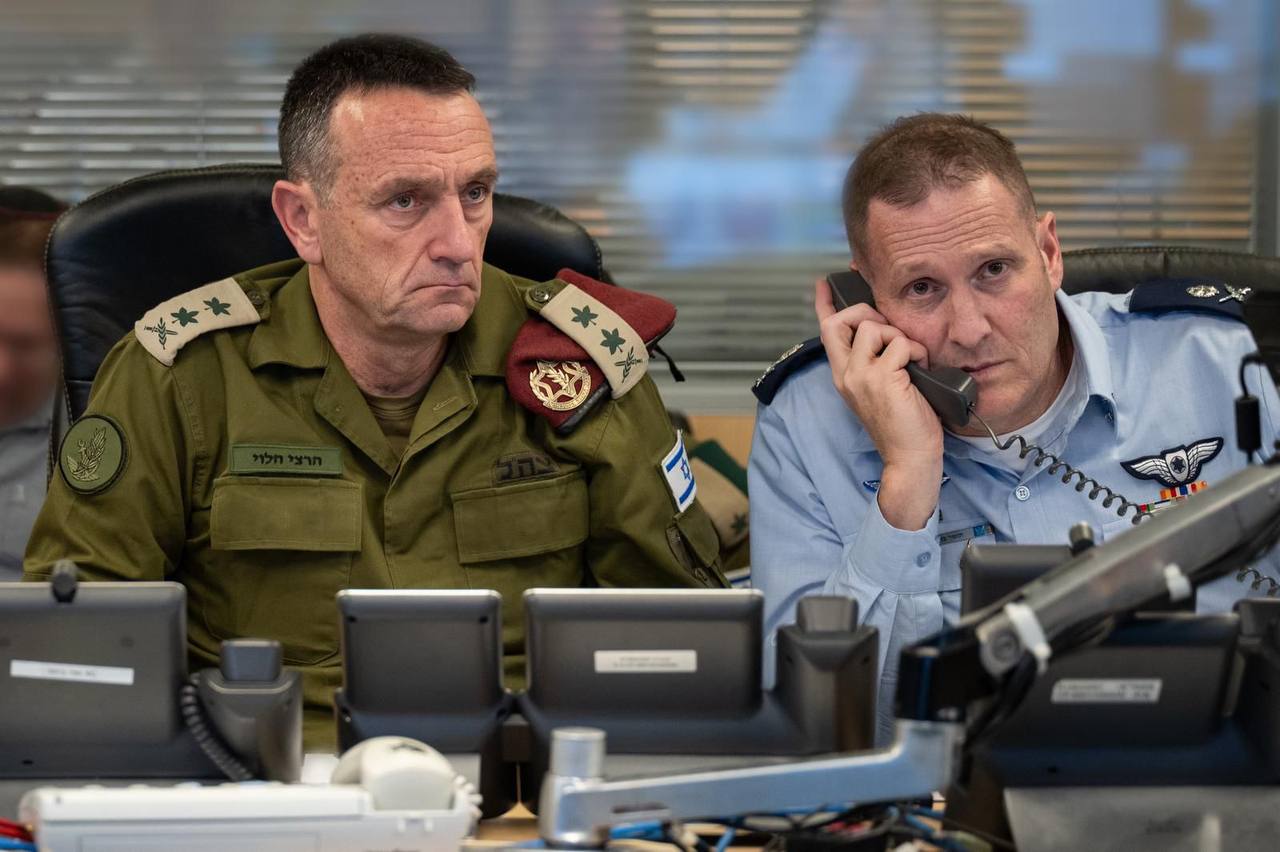
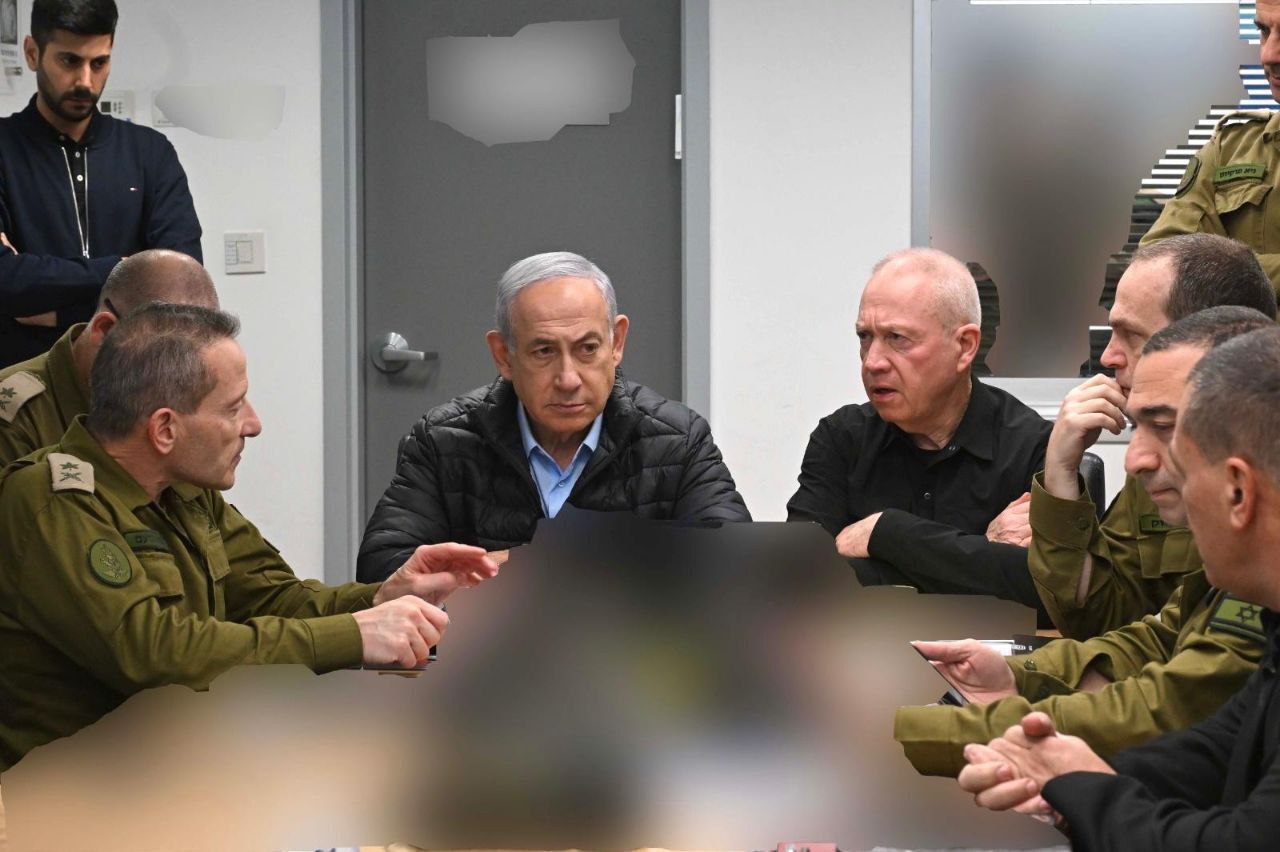
American news website Axios also reported that the Israeli attack on Iran consisted of three waves, with the first wave targeting air defense sites and the second and third waves aimed at missile and drone production bases and facilities.
Yair Lapid, leader of the Israeli opposition and head of the centrist Yesh Atid party, criticized the level of the Israeli regime’s response against Iran, claiming: The decision not to attack strategic and economic targets in Iran was a mistake. We could and should have imposed a higher cost on Iran.

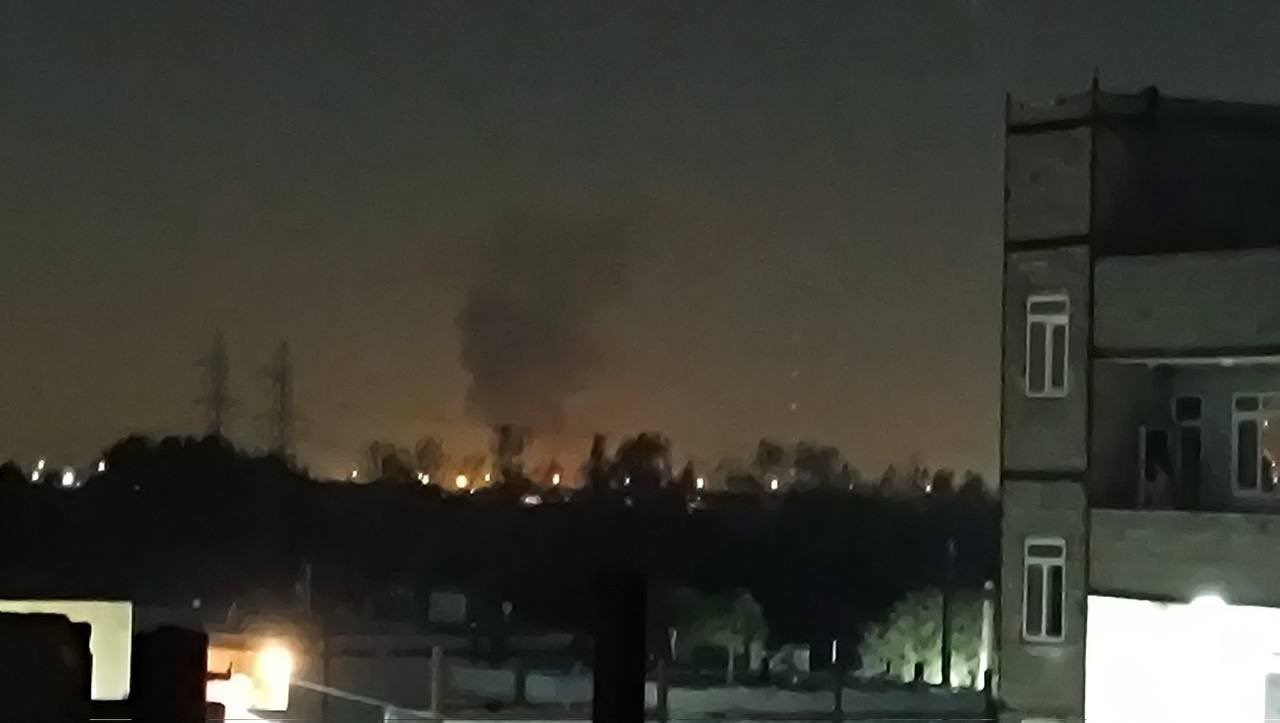
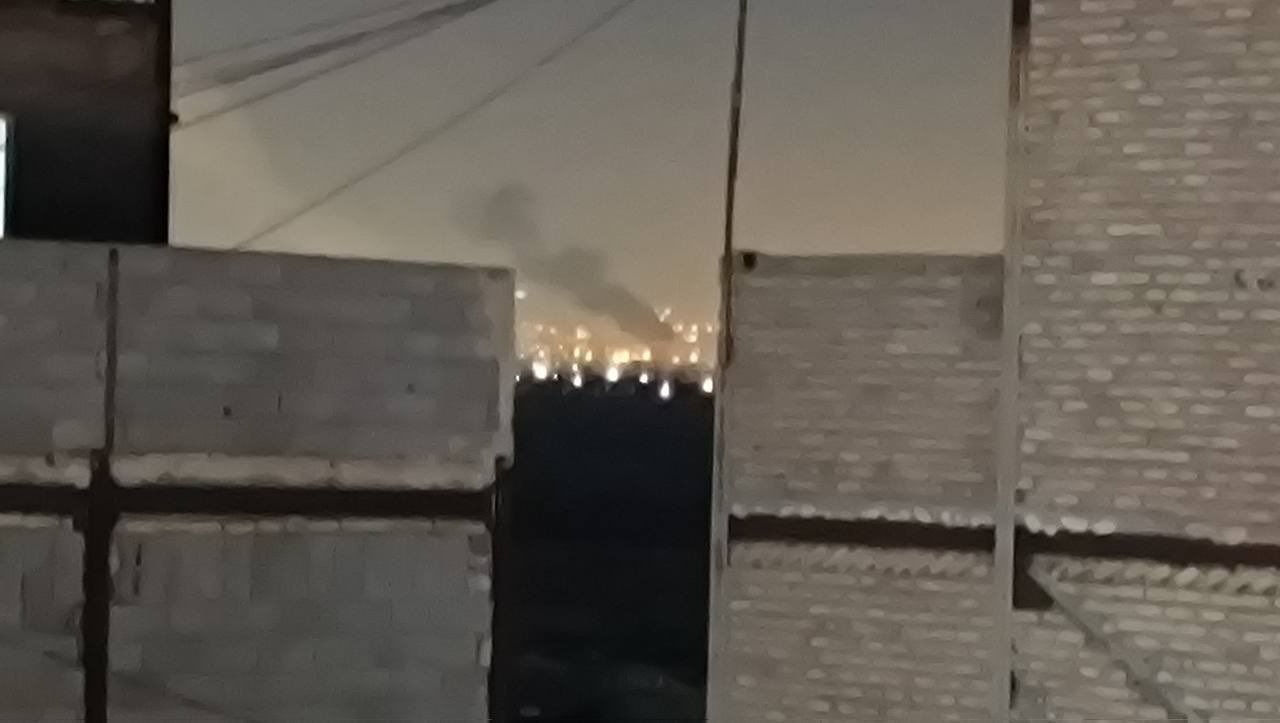

The Islamic Republic of Iran Air Defense Force confirmed the Israeli air strike, stating that the sounds heard around Tehran were related to the country’s air defense response to Israeli attempts to attack three locations around the capital city. In a supplementary statement, the IRIADF noted: Despite prior warnings from the officials of the Islamic Republic to the criminal and illegal Zionist regime to refrain from any adventurous actions, this illegitimate regime attacked military centers in Tehran, Khuzestan, and Ilam provinces in a provocative act. As a result of the successful interception by the use of integrated air defense system of the Islamic country, this aggressive action was countered; therefore, it caused limited damage to some locations. The extent of the damage is under investigation. In this regard, we invite the people to maintain solidarity and calm and request that they follow news stories related to these incidents through national media and not pay attention to rumors fabricated by enemy’s media outlets.
The Islamic Republic of Iran Army also announced the martyrdom of two of its forces in defense of Iran’s security and in the way of preventing harm to the nation and its interests while they were performing military service to counter the attacks of the criminal Zionist regime.




The news of the martyrdom of a civilian named “Allahvardi Rahimpour” was also announced. In this way, the number of martyrs of the Zionist regime’s attack on Iran increased to five.

Following these attacks, the Israeli regime closed its airspace until 8:30 a.m. (local time). Spokesperson for Iran’s civil aviation organization Ja’far Yazerlou also announced the cancellation of flights on all routes over the country’s airspace until further notice.
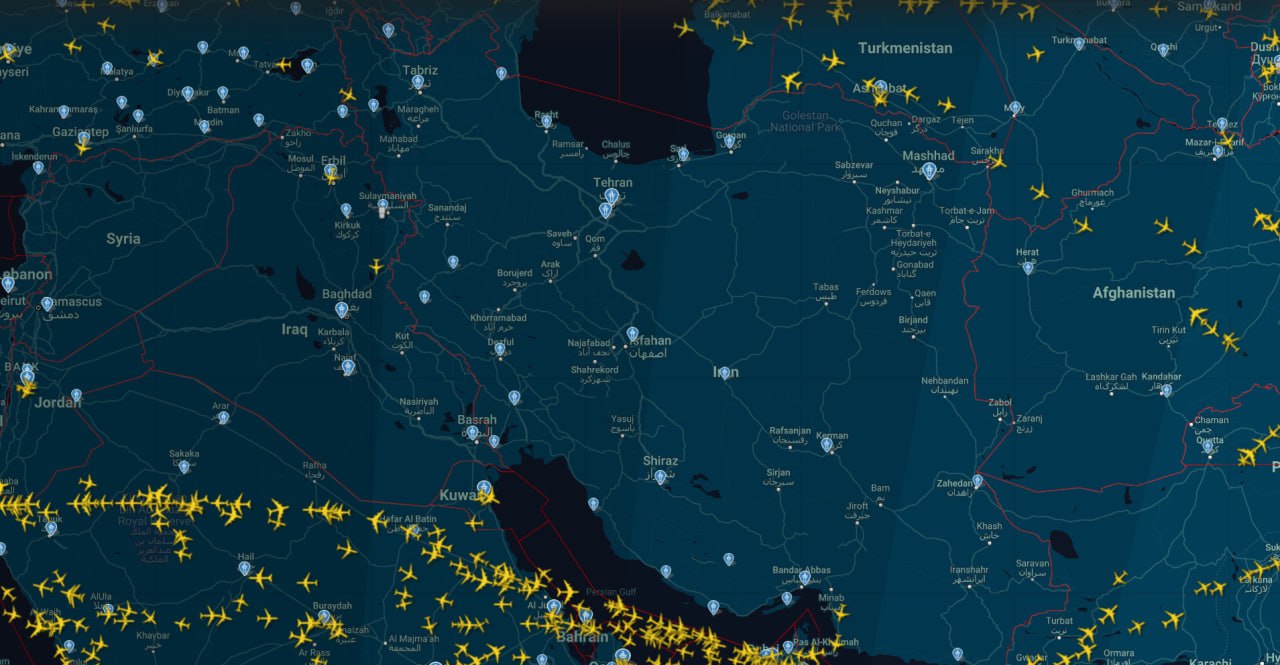
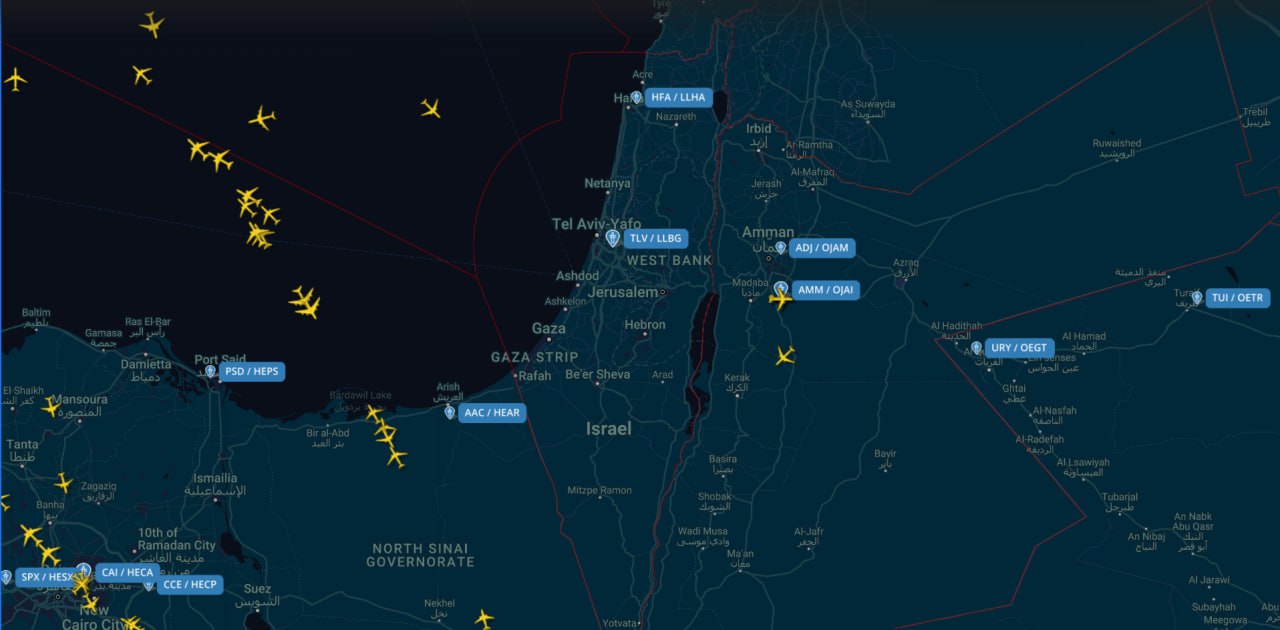
Countries including Saudi Arabia, Yemen, Iraq, Syria, Egypt, the UAE, Pakistan, Qatar, Oman, Turkey, Lebanon, as well as regional resistance movements such as Hamas and Islamic Jihad in Palestine, as well as prominent figures like Sayyid Ammar al-Hakim, head of the National Wisdom Movement in Iraq, and Sayyid Muqtada al-Sadr, leader of the Shiite National Movement, strongly condemned the Israeli army’s attack on Iran.
A video shows that one of the projectiles hit a site in the east of Tehran. Probably, this attack was carried out against the Khojir missile facility in the east of the city.

The Zionist army published pictures of the fighters participating in the operation to attack Iran. Based on the pictures below, Israeli Air Force F-15C/D Baz fighters (registration numbers 673 and 957) from Squadron-106 based at Tel Nof Air Base and F-16I Sufa fighters (registration number 494) from Squadron-119 based at Ramon Air Base have participated in this operation.
Based on these images, the F-16I fighter is equipped with two 370-gallon tanks under the wing and a 300-gallon tank under the fuselage, and two 450-gallon fuel tanks next to the AAQ-14 targeting pod. In addition to the 610-gallon fuel tank under the fuselage, two 500-gallon fuel tanks under the wing and two 710-gallon adaptive tanks, the F-15C/D fighter is equipped with Python-5 and Aim-7 Sparrow air-to-air missiles along with the Elta-8212 EW pod.
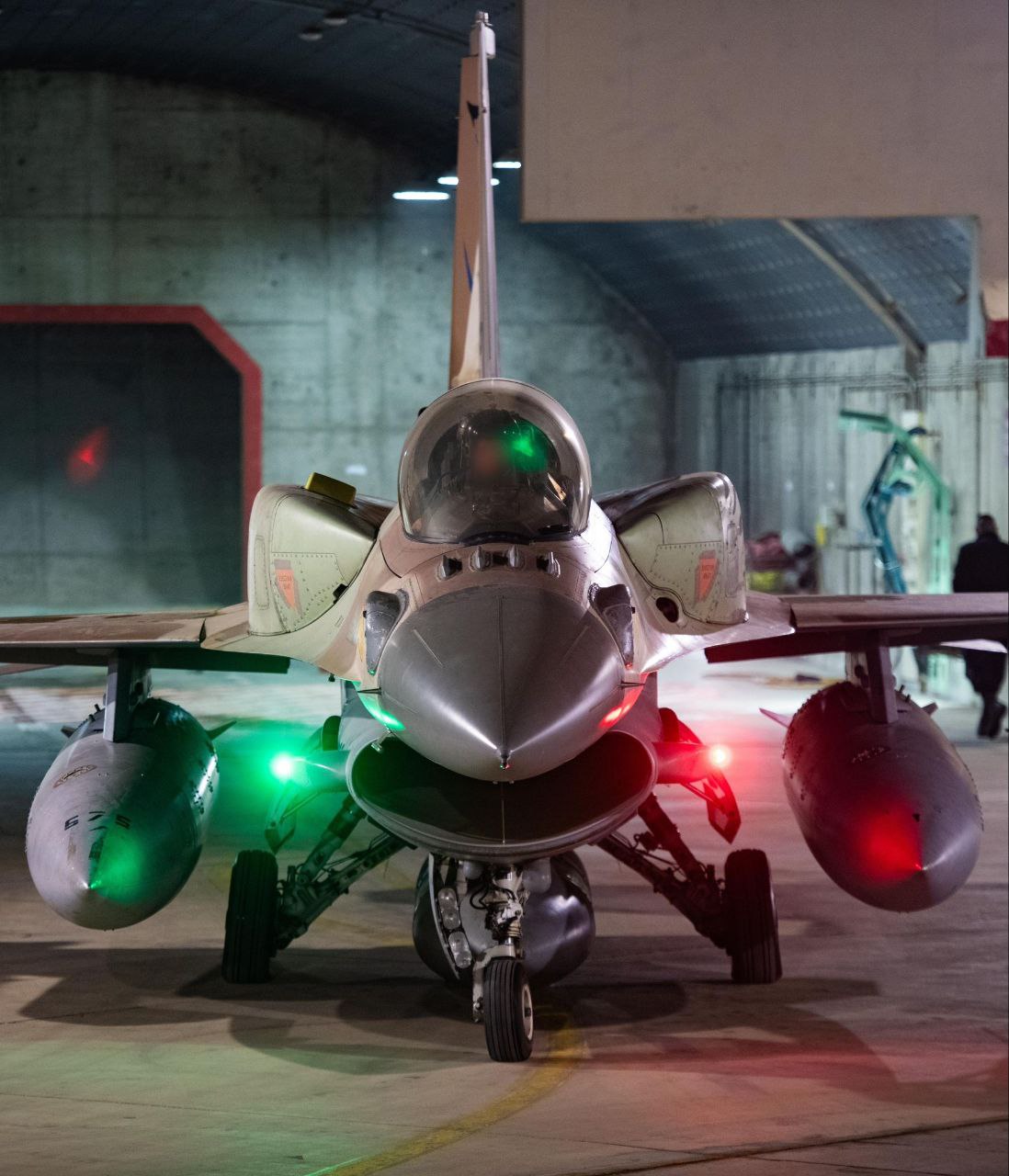
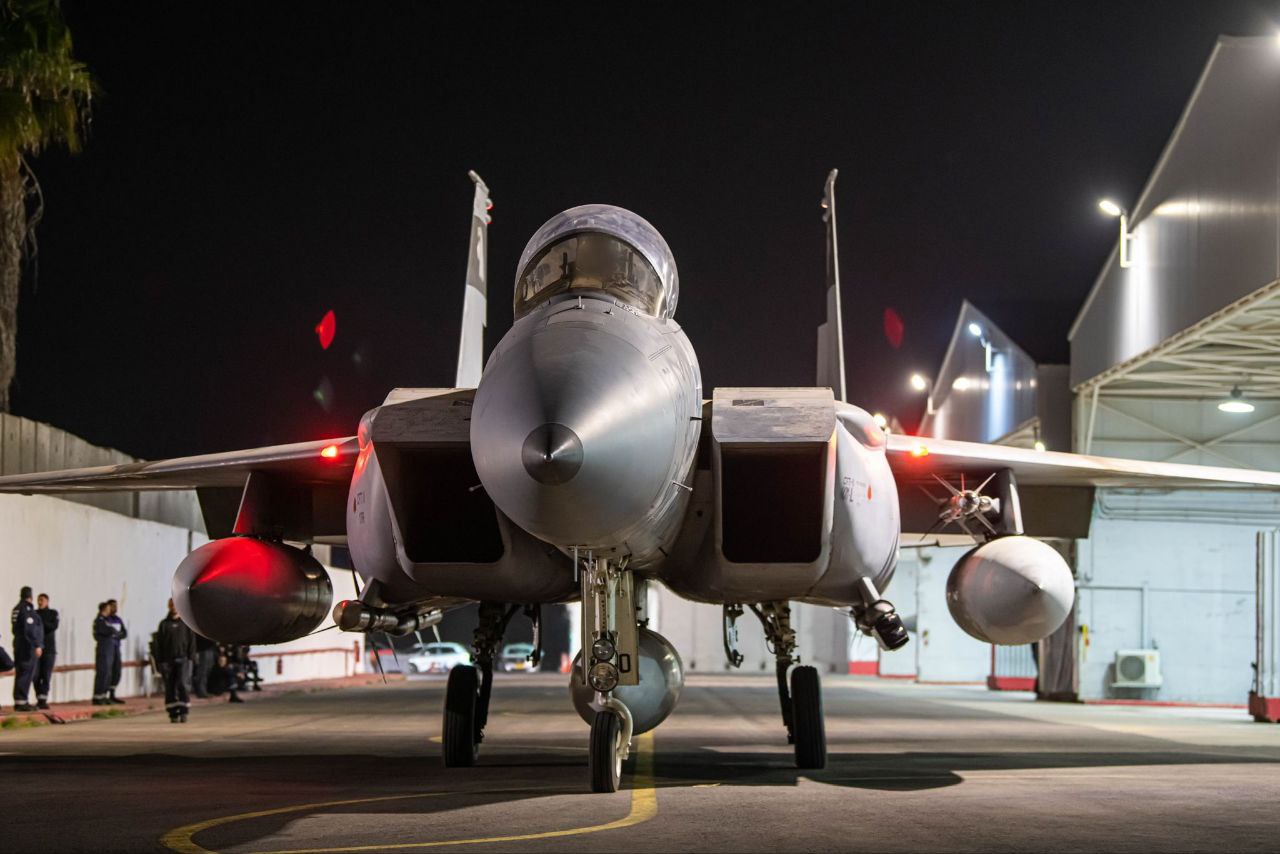
The possibility of US Air Force refueling assistance to Israel:
By examining the activity of the US Air Force refueling tankers in the region (including KC-135 and KC-46), we can see at least eight of the above-mentioned aircraft during Friday and Saturday morning, making numerous flights from the origin/destination of Al Udeid Air Base located in Qatar.
With a more detailed examination of the flights, it can be seen that at least three fuel tankers of the US Air Force were flying in the skies of the region, especially in the northern areas of the Persian Gulf, the skies of southern and central and northern Iraq, during the time period of the air attacks on Iran. The timeline of the above tankers is as follows:
KC-135T: This aircraft with the registration number 58-0061 took off from Al Udeid Air Base in Qatar at 23:00 on Friday night, and was flying over Iraq at 00:00 on Saturday morning, and after turning off the transponder, after six hours of flight at 6 am on Saturday after flying in the north of the Persian Gulf, it finally landed in Qatar at 7 am.
KC-135R: This bird with the registration number 57-1471 took off at 00:00 Saturday morning from Al Udeid Air Base in Qatar, it was flying over Iraq at 1:00 on Saturday and after turning off the transponder, after a six-hour flight at 6:00 a.m. on Saturday after flying in the northern Persian Gulf, it finally landed in Qatar at 7:00 a.m.
KC-135R: This bird with the registration number 61-0309 took off from Al Udeid air base in Qatar at 21:30 on Friday, it was flying over Iraq at 22:00 on Friday, and after turning off the transponder, after about five hours of flight, at 3:48 a.m. on Saturday after flying over the northern Persian Gulf, finally landing in Qatar at 4:30 a.m. on Saturday.
The flight time of the above three fuel tankers shows that all three tankers were flying over Iraq with their transponders turned off at the time of the air attacks on Iran. Based on this, it can be assumed that the above-mentioned birds were refueling Israeli Air Force fighters or other fighters that were flying in this area.
Also, the US Air Force F-16CJ/DJ fighters may participated in this operation and suppressed Iranian air defenses in the western areas of the country. According to the news published during the operation, an air defense site in Mahshahr was attacked, which could be related to US Air forces assistance to Israel.


The new satellite images from the Parchin military facility in the east of Tehran show that at least four silos were hit. As it is clear in the images, four silos have been targeted with accuracy. Obviously, these silos were hit with a light warhead of about 100 to 200 kilos. This amount is enough to destroy a silos.
The Israelis claim that one of the key targets in last night’s attack was 12 “planetary mixers”, which are an important part of Iran’s ballistic missile program. Planetary mixers are used to produce solid fuel for long-range ballistic missiles, and their destruction would harm Iran’s ability to renew its missile stockpile.
The Zionists claim that mixers are very complex equipment and that Iran alone is not able to produce it and must buy it from China, and it takes at least a year to rebuild the mixers. Of course, it is nonsense, Iran has made the necessary preparations for such events in advance and is not dependent on this number of mixers!
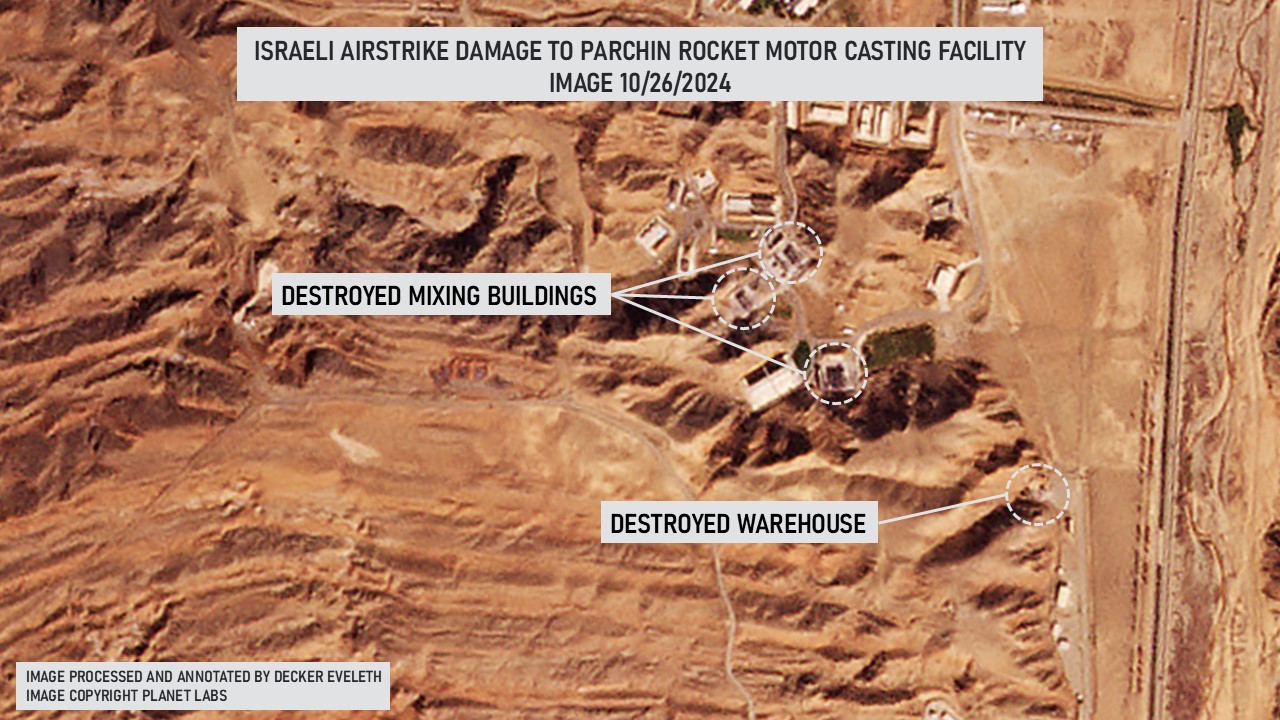
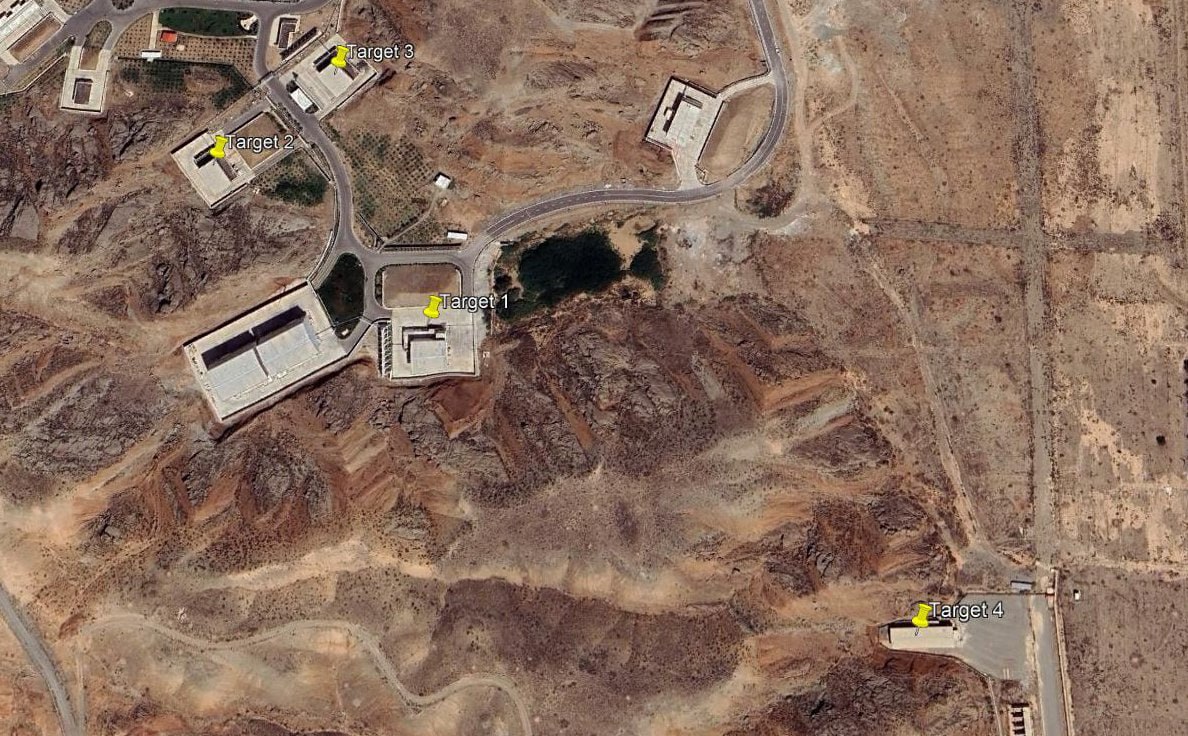


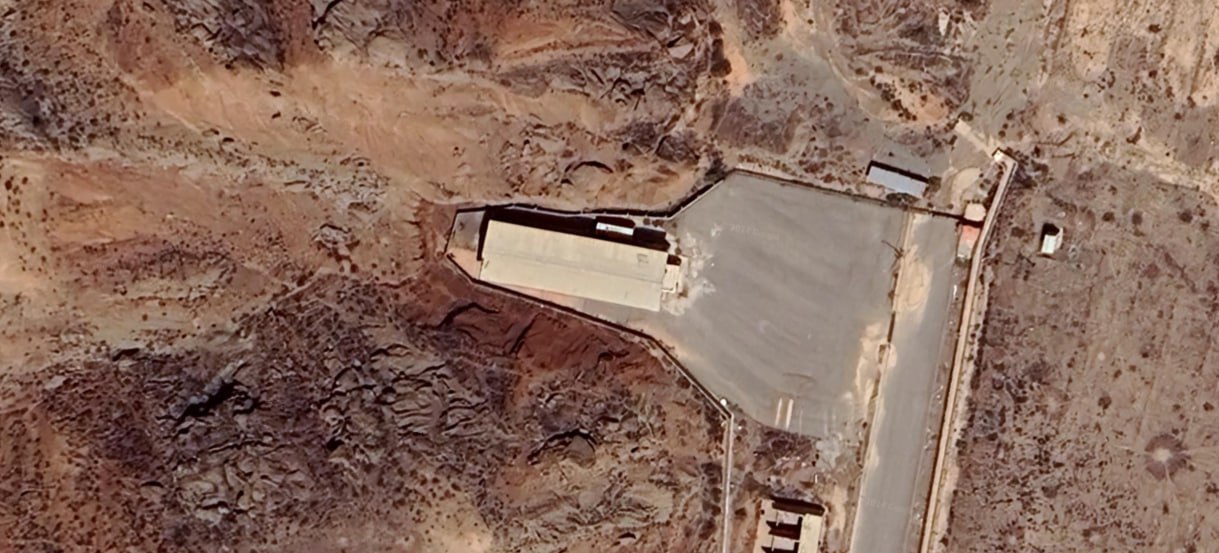
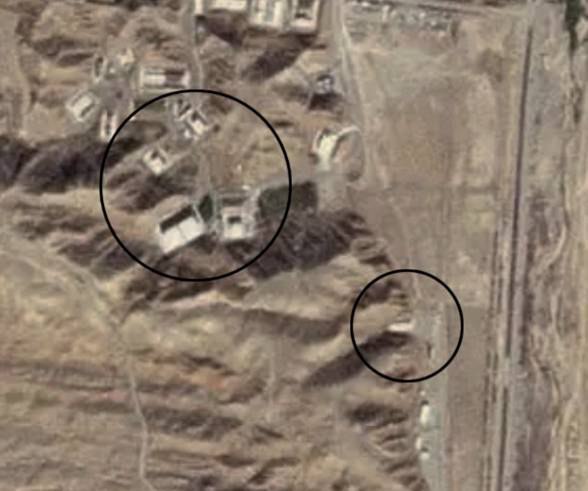
Satellite images show two hits in the Khojir missile facility in the east of Tehran. The quality of these two hits is exactly like Parchin’s hits and is not that strong, which indicates a light but accurate projectile.
An important point that can be obtained from the satellite images is that none of the hits led to widespread fires or destruction. There is also a possibility that the silos were empty at the time of the attack. Also, the claim of the Zionists about the mixer and so on is wrong.

Analysis of satellite images shows that two halls in the important site of Shahroud have been targeted. One hall on the north side and another hall in the center of Shahroud complex. The second hall is one of the oldest in Shahroud site and is used to prepare solid fuel for ballistic missiles and SLVs.
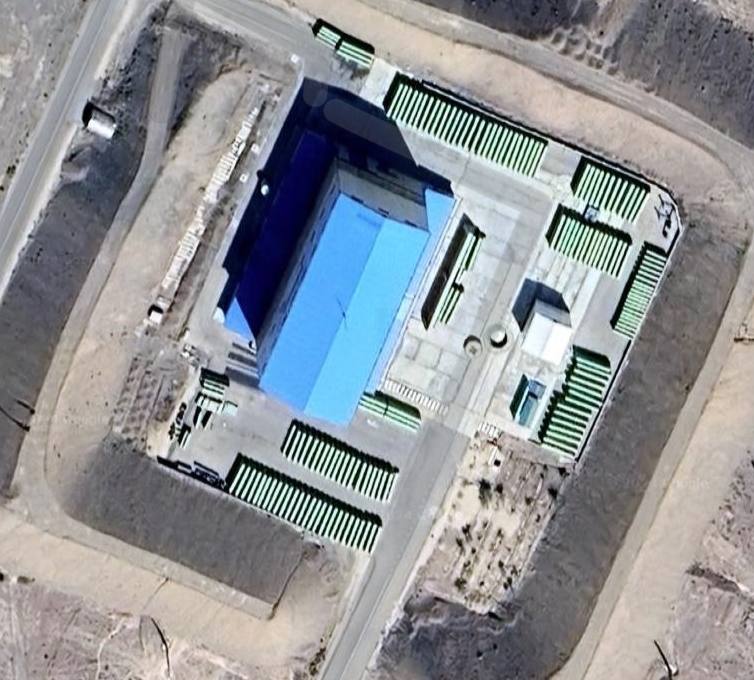
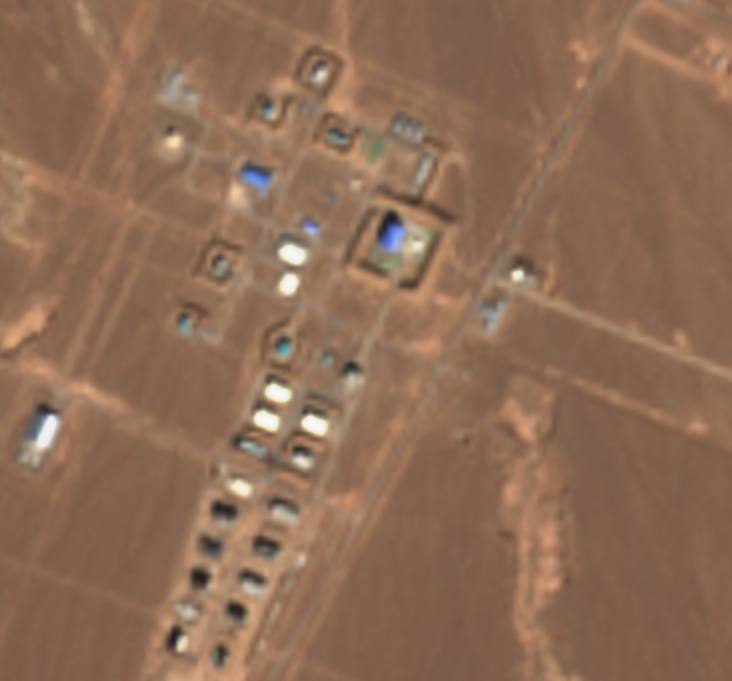
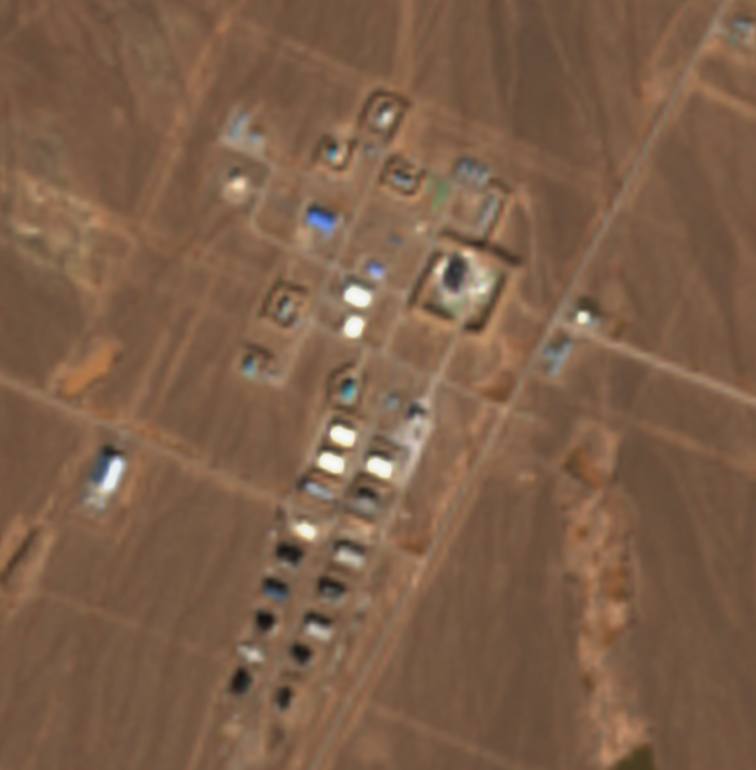
According to the available information, at 04:16 am on Saturday, several hostile projectiles were intercepted over the Chahe Jam area of Shahroud, and two projectiles hit the halls after passing through the air defense layers.
Here, like in Parchin and Khojir, we don’t see big explosions and fires. In fact, a week before the attack, an order had been issued to evacuate important equipment.
The Shahroud Military Complex includes the Shahroud Space Center and the missile test site and is considered a key center for Iran’s space program, especially the development of solid fuel rocket boosters.
The distance between the Shahroud site and the western border of Iran is about 900 km. Some believe that Israel may have used an unknown drone to target Iran’s facilities, which, of course, considering the distance and time required for the return of the drone, seems unlikely, unless the drone used the Caspian Sea airspace to launch missiles.
But another suspicion is that Israel has used the Blue Sparrow missile (Golden Horizon), which was mentioned in the leaked Washington documents and has a range of about 2000 km, with a light warhead.
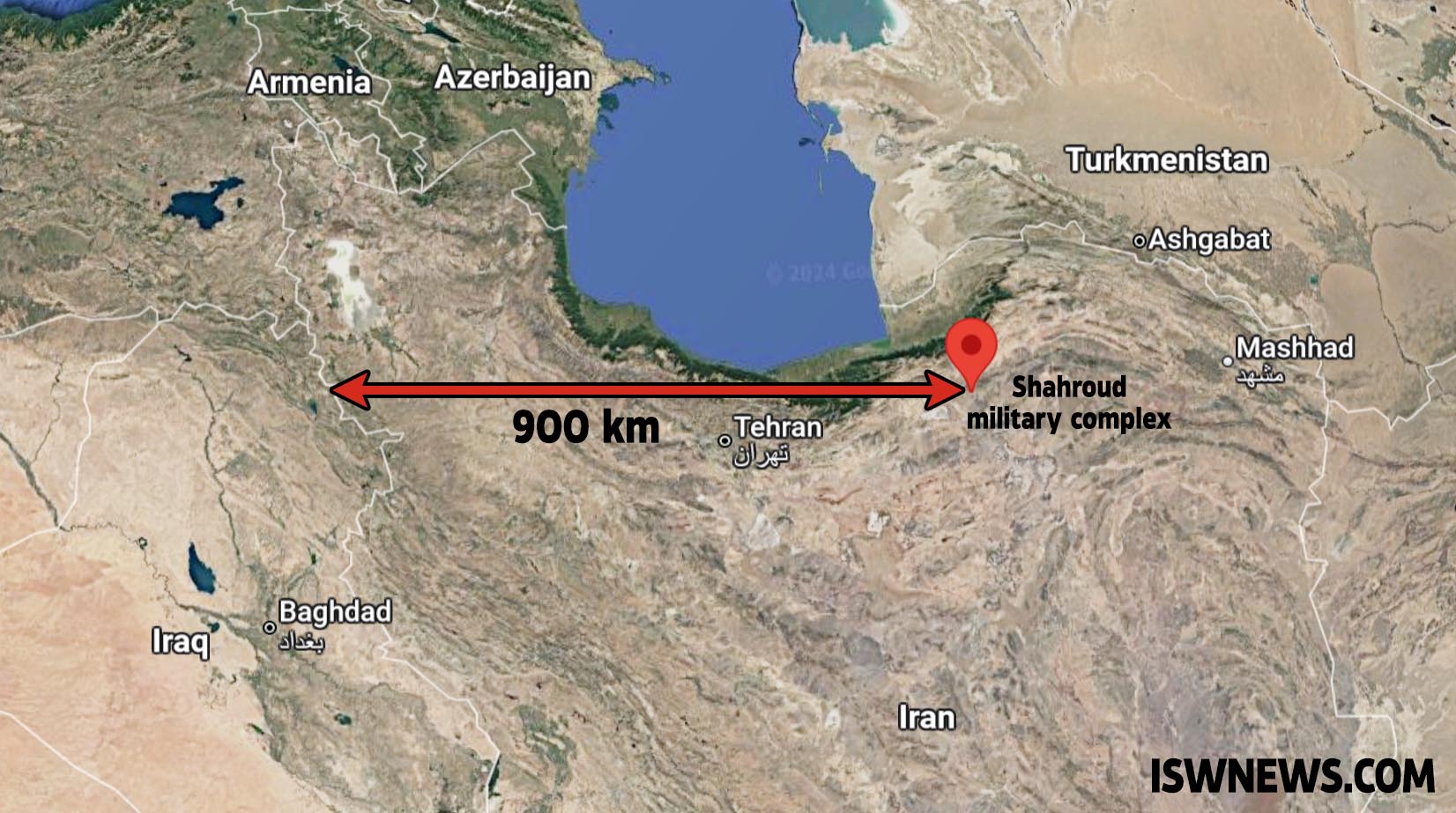
Satellite images revealed that a Ghadir early-warning radar was targeted in the Ilam province. This radar station is located 12 kilometers southwest of Ilam city.
Ghadir or Qadir early-warning radar with a range of 1100 km and capable of tracking targets to a height of 300 km. The radar has the ability to detect air targets, stealth aircraft, cruise and ballistic missiles, and low-orbit (LEO) satellites.
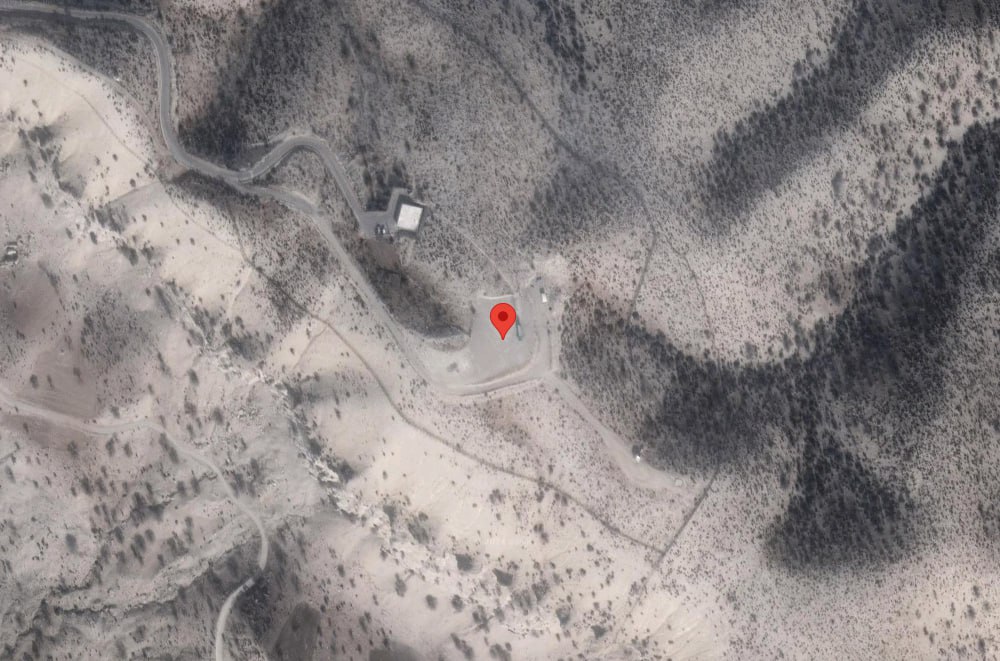
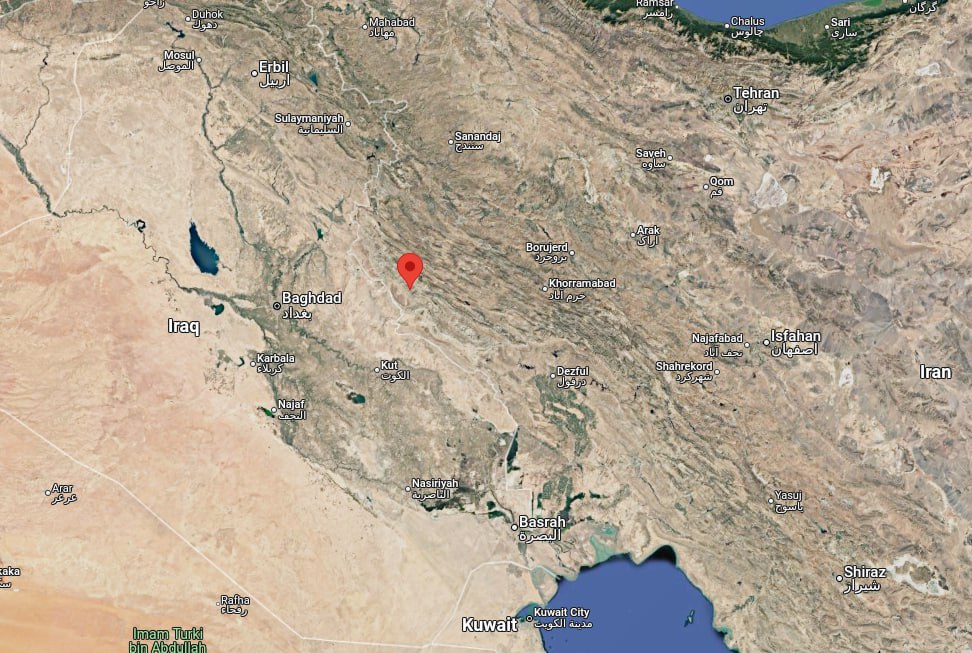
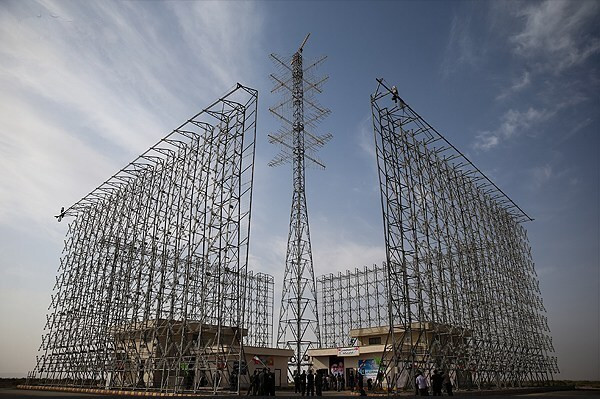
The strategic position of this radar and its long range is a vital capability and is considered an important piece of the puzzle of the country’s integrated defense system.
Iran has a large number of these radars in different parts of the country and it is easy to replace them; However, the plan of this round of attacks by the Israeli regime and its accomplice, the US, to blind this point and create a hole in the mentioned air defense layer, is of great importance and must be carefully examined.
Another satellite images have been published which show that Ghadir early-warning radar 15 km north of Ahvaz was also targeted.
Given the visual evidences from the Israeli airstrikes against Iran, it can be said that this operation was limited and the Islamic Republic’s air defense forces have demonstrated successful performance in the face of the Saturday attacks.
However, the act of inflicting casualties on Iranian forces is an unforgivable and intolerable sin, increasing the necessity for a response to the Israeli regime’s aggression against Iranian territory. Iranian political and military officials had warned the leaders of the Israeli regime during previous military strikes, namely Operation True Promise 1 and Operation True Promise 2 that any reaction to Iran’s legitimate response would lead to renewed and harsher repercussions for the regime.

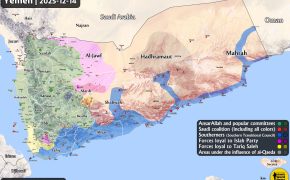
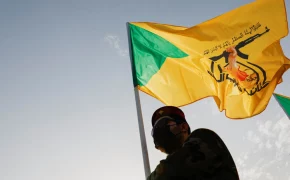

Comment